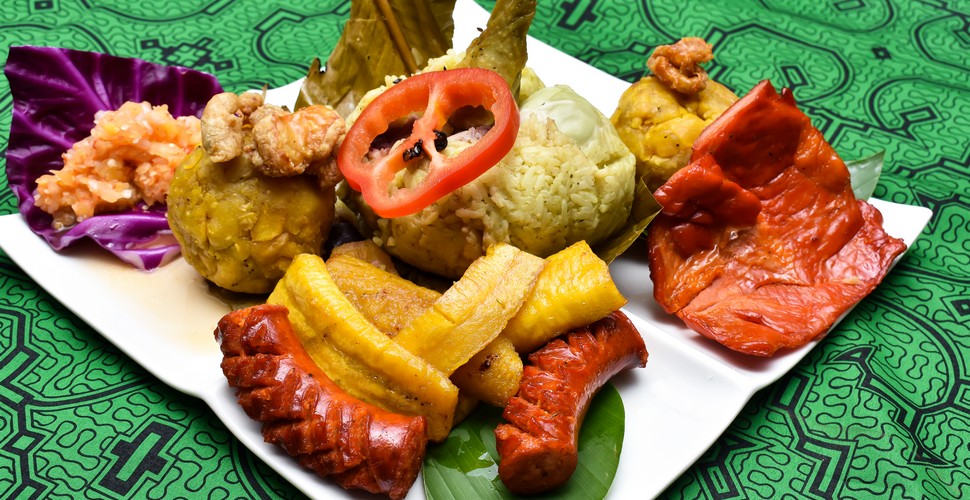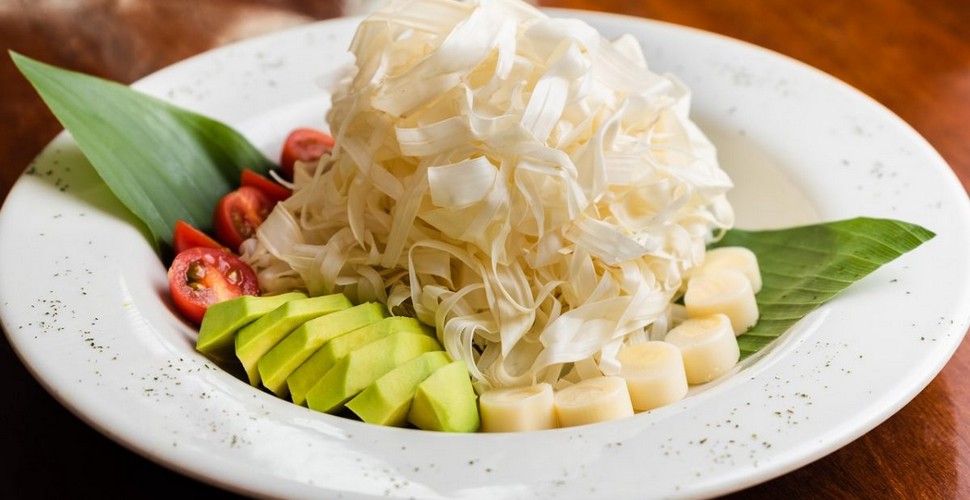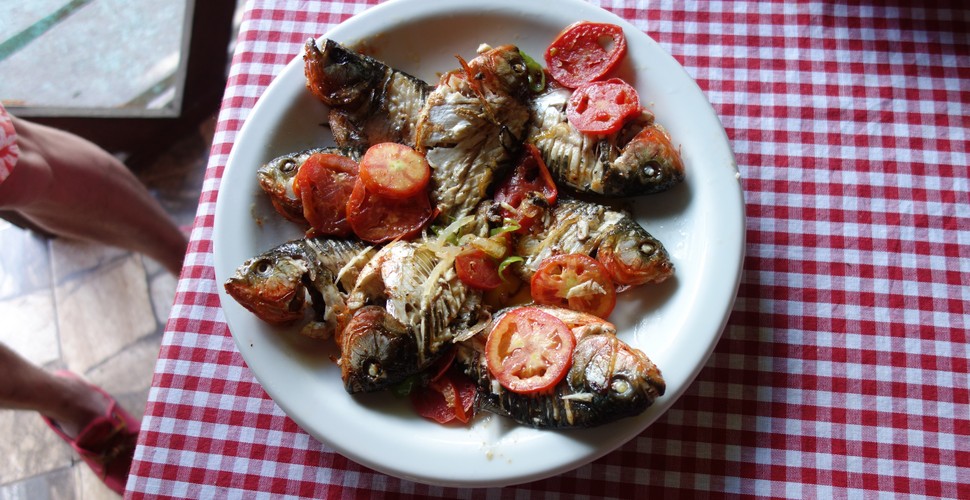
Must-Try Amazon Dishes in Peru
Written by:Valencia Travel
Last Update: 2025-06-26
Peru is world famous for its cuisine. There are three main regions in the country, the Coast, Mountains, and Jungle regions, meaning that the ingredients are succulent, varied, and delicious. Although the typical food of the Peruvian jungle is not as elaborate as other foods from different regions of Peru, they have very special and interesting typical dishes. This South American nation has a great culinary tradition; Its varied environment has led to the use of many different ingredients in their different types of food. Here are some of the best Traditional dishes from The Peruvian Amazon.
Amazonian Food
Juane
In the Peruvian jungle, it is very common to consume dishes served with rice, beans, and lentils. Juane is one of the most popular and traditional dishes of the Peruvian jungle. Every 24th of June, the Amazon rainforest of Peru celebrates the feast of San Juan or the day of San Juan Bautista; Juane is eaten to celebrate this catholic festival. This meal consists of a deep dish of rice stuffed with meat or chicken, boiled egg, black olives, and spices. All these ingredients are wrapped in bijao leaves (which look like banana leaves and are jungle plants). The next step is to boil this preparation in clay pots; when it is ready it is served with the same leaves of bijao. What is pretty simple in concept is somehow incredibly complex in flavor. Juane is commonly sold in the local markets and on the street and enjoyed by locals for pretty much any meal of the day.
Tacacho with Cecina
El tacacho con cecina is a dish typical of the Amazon rainforest of Peru. Together with the Juane, it is considered the most delicious dish in this region of the Amazon. The cecina is dried and smoked pork, elaborated with traditional spices of the forest. This combination of spices is what gives the tacacho with jerky its unique flavor. Although at first glance it looks like a pretty dry dish, the reality is that it is surprisingly moist. Green bananas are typically used to make the balls, but some variations make a mix of green and yellow bananas to give the dish a distinctive flavor. The dish is completed with fried banana chips called patacones. If you’re lucky, it might come with a “please oh please keep that coming!” dip of lightly spiced diced onion, cocona fruit, and lime.
Tacacho con Cecina
Chonta Salad
If you’re expecting salads made from big leafy greens of lettuce, be prepared that it’s probably not going to happen. Salads here are often made from a base of delicately shredded palm hearts (called chonta) and sometimes dressed with a light mayonnaise-based drizzle. Don’t underestimate it! Just because it’s not complicated with a bunch of ingredients doesn’t mean it isn’t absolutely sumptuous comfort food. A few of these and you’ll be wondering how you lived without this food in your life before.
Chonta Salad
Fish
Fish is also very popular since it is found in the numerous rivers that exist in the region. Given the sheer size of the Amazon River and its tributaries, it’s not surprising that freshwater fish forms the main source of protein in Amazonian cuisine. The fish you eat here will always be fresh and will make it to your plate in various forms, either grilled, skewered with yucca plant, fried, steamed, or blended into sauces or stews.
Piranha Fish
Chontajuane
This meal consists of a mixture of chonta (see above), palm hearts, and paiche - a typical fish from the Amazon, (see below) crushed and wrapped in the much-used leaves of bijao. Sometimes banana leaves are used to wrap chontajuane instead of bijao leaves.
Patarashka
Requiring skill and excellent timing, this dish is best enjoyed right off the grill. A piece of fresh river fish is marinated in a tomato and onion sauce, then wrapped in those super handy bijao leaves and grilled. The result is crispy and succulent and well worth waiting for.
Patarashka
Paiche
A must-try is paiche, also known as arapaima, the largest freshwater fish in South America. They regularly reach up to 2 meters long in length and easily weigh 45 pounds! Additionally, it is one of the oldest species, since it has not evolved much since the Miocene epoch about 5 million years ago. This fish also has the peculiarity that it can rise to the surface to breathe using its organs similar to the lungs. The paiche is used to make many dishes in Peruvian cuisine; It can be roasted, sealed, roasted, or steamed. Eating fish is all part of a memorable Amazon experience. Ceviche prepared with river fish is also a specialty of the Peruvian jungle.
Acai
The most commercially-hyped fruit of the Amazon rainforest is the acai berry. It became famous abroad as a “superfood” for its potential health benefits. It is the fruit of a wild palm tree and is one of the most nutritious berries in the world, containing a large number of antioxidants, Omega 6 and 9 fatty acids, anthocyanins, and extraordinarily high levels of vitamins A and C.
Acai
Churos
Churos are giant snails from the Amazon jungle. These snails are considered a delight of the jungle and are an important source of protein among the natives of the Peruvian Amazon. It is possible to find them for sale in markets of Iquitos and in other towns of the Peruvian Amazon. They are usually cut into small pieces and served in stews with banana, garlic, and salt.
Mamacos or Domblos
Also known as siqui sapa, are giant leaf-cutter ants that live in the Peruvian jungle. are usually roasted in the pan and sold ready by the kilo in the markets. Although they are found in local markets, they are seasonal, being most popular between October and November. They have a flavor similar to pork rinds, with a slightly earthy flavor.
Mamacos
Inchicapi's soup
Inchicapi is a creamy soup whose main ingredients are chicken meat, garlic, cilantro, cassava, oil, and peanuts. Usually, this soup is served as an appetizer.
Suri
The larvae of Suri are fat and restless worms that can be found in local markets, especially in the market of Belén in Iquitos. They are considered an Amazonian delicacy and are the larvae of the Peruvian coconut plant. Although they can be eaten alive, the most common is to place them on a skewer and roast them on the grill.
Suri
Exotic Alcohol of the Amazon
Liquors are very popular in this region; Iquitos, the largest city in the Peruvian jungle, is famous for its liquors and typical drinks. Mainly these liqueurs are prepared by macerating different ingredients, which include herbs, worms, and alcohol from sugar cane. It is said that these drinks have aphrodisiac properties, and are very popular among Peruvians. The most common are the Rompe Calzón, the 7 Roots, the Chuchuhuasi, Uvachado (liquor made from black grapes and honey), and the Getup, Lazaro. Usually, these liquors have a rather strong flavor, although the Uvachado, has a very fruity and sweet flavor.
Timbuche
Timbuche is a soup or concentrated fish broth, traditionally used with piranha, beaten eggs, and cilantro/coriander. This food is also known colloquially as 'rose dead'
Timbuche
If you are planning a trip to The Peruvian Amazon, contact us here at Valencia Travel Cusco and try some of these Amazonic delicacies at source!
 Aventure
Aventure
 Cultural
Cultural
 Gastronomy
Gastronomy
 Wellness
Wellness
 Local Living
Local Living
 Luxury
Luxury
















